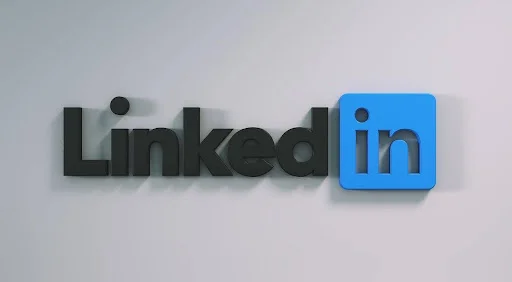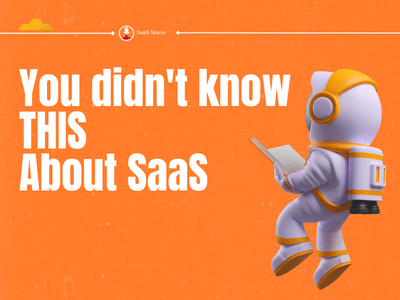In the fiercely competitive Software as a Service (SaaS) startup landscape, traditional marketing can cause oversaturation and rivalry. To stand out in this saturated landscape, you need to deviate from the traditional playbook and embrace the diverse array of digital tools available today.
Creative and innovative approaches to digital marketing can set your company apart, fostering brand recognition and loyalty in a market where differentiation is paramount.
In this article, we will delve into formulating a LinkedIn marketing strategy tailored to the specific needs of SaaS firms. This approach prioritizes authenticity, while also capitalizing on the unique features and opportunities that LinkedIn provides.

- Tapping into the Potential of LinkedIn for SaaS Startups
- 10-Step LinkedIn Marketing Strategy for SaaS Startups
- 1. Optimize Your LinkedIn Company Page
- 2. Develop Authentic Relationships
- 3. Foster Compelling Content Creation
- 4. Share Vulnerability
- 5. Elevate Employee Advocacy
- 6. Utilize User Generated Content
- 7. Engage Users Through Gamification
- 8. Become a Thought Leader
- 9. Collaborate with Influencers
- 10. Observe LinkedIn Analytics and Make Changes
- Over to You
Tapping into the Potential of LinkedIn for SaaS Startups
LinkedIn stands as the prime hub for professionals and a perfect environment for B2B networking, collaboration, and cultivating a powerful LinkedIn content strategy.
In the realm of Software as a Service (SaaS) startups, the vast landscape of LinkedIn, when navigated with a targeted LinkedIn strategy, becomes a treasure trove of opportunities.
Decision-makers, potential clients, and invaluable partners actively traverse this fertile digital ground, reachable through the apt use of the LinkedIn company page and LinkedIn ads.
By leveraging the marketing capabilities of LinkedIn, including LinkedIn analytics, SaaS companies can not only effectively connect with their target audience but also enhance brand visibility and cultivate high-quality leads.
Here’s how to construct a robust LinkedIn marketing strategy, including creating a LinkedIn company page and LinkedIn ads tailored to your SaaS startup with these 10 comprehensive steps.

10-Step LinkedIn Marketing Strategy for SaaS Startups
1. Optimize Your LinkedIn Company Page
Making sure that your firm and its offerings are flawlessly portrayed on LinkedIn is imperative before beginning any marketing campaigns. To achieve this, follow these key steps including creating a LinkedIn company page and tapping into LinkedIn analytics.
Step 1: Choose the profile image
First, choose a professional image or display the logo design of your company as your profile picture for your LinkedIn company page. This visual element on your LinkedIn company page serves as the first impression for those viewing your profile. If you’re not confident in your logo design skills, consider hiring professional services to create a business logo for you.
Step 2: Craft a compelling headline
On your LinkedIn company page, craft a compelling headline that summarises your role within the startup and highlights the unique value proposition your company offers. This crisp statement on your LinkedIn company page should immediately capture the interest of your profile visitors.
Step 3: Create an engaging summary
Create a concise yet engaging summary on your LinkedIn company page that effectively communicates your SaaS offering and visionary goals. On your LinkedIn company page, provide a snapshot of what sets your startup apart and the positive influence it aims to achieve.
Check out this infographic by Jobscan that shows how to write an engaging LinkedIn summary:
Step 4: Fill in additional information
Showcase relevant achievements and experiences that highlight your expertise and qualifications.
Recognize that your LinkedIn page often serves as the initial point of contact for potential connections. It is crucial that your profile resonates with your target audience, providing a clear showcase of how your prospective customers can benefit from your innovative solution. By meticulously optimizing your profile, you set the stage for meaningful connections and opportunities on the platform.
2. Develop Authentic Relationships
When it comes to traditional LinkedIn marketing strategy, one of the most typical tactics involves building a big network.
However, when it comes to SaaS startups, the most important benefits can be derived from cultivating actual relationships.
Locate individuals who have a genuine comprehension of your SaaS service, engage in in-depth talks with them, share knowledge that is insightful, and empathize with the specific difficulties that they face.
Genuine, in-depth contacts have the potential to result in fruitful possibilities and productive partnerships, which are the building blocks for sustained achievement.
Importantly, consider the impact of your LinkedIn connections on your strategy. In some cases, knowing how to remove connections on LinkedIn strategically can enhance the authenticity and focus of your target audience using tools such as networking CRM, ensuring that your connections align more closely with your SaaS startup goals.
3. Foster Compelling Content Creation
Building your startup’s authority and sustaining audience engagement hinges on the consistent generation and sharing of content that delivers genuine value. To achieve this, effective content planning ensures your strategies are well-structured, organized, and consistently aligned with your audience’s needs.
Crafting thought-provoking blog posts serves as a fundamental strategy. Address industry challenges, trends, and innovative solutions in these posts, positioning your startup as an authoritative voice capable of elegantly resolving pain points.
Engaging videos are a valuable asset in your content arsenal. Develop a range of content, from quick explainer videos to product demos and exclusive behind-the-scenes insights. Optimizing resources and planning ahead can help control video production costs when creating video content. Utilize the visual medium to captivate your target audience and provide a more immersive understanding of your offerings. To extend the reach of your video content offline—at events, on packaging, or printed materials—consider using the best QR code solutions to drive traffic directly to your videos and measure engagement with ease. If you’re searching for efficient tools to streamline video creation and sharing, you can also consider exploring Loom alternatives that fit your workflow and budget.
Visual storytelling is further enhanced through the creation of visually stimulating infographics. These graphics serve as powerful tools to distill complex ideas into easily digestible visual snippets, making your content more accessible and shareable.
Additionally, real-world case studies and success stories play a pivotal role in showcasing the tangible impact of your SaaS product. Offer detailed narratives that illustrate the challenges faced, the methods used to address them, and the measurable outcomes obtained. This enhances your brand’s credibility while also offering valuable insights to potential customers.
4. Share Vulnerability
While LinkedIn is often perceived as a platform synonymous with professionalism and success, there exists an untapped strength in vulnerability that can significantly impact your engagement and connection with the audience.
Contrary to the traditional image of showcasing only achievements, the power of vulnerability lies in sharing not just the highlights but also the challenges encountered along the intricate journey of your startup.
Dissolving the myth that vulnerability is a weakness, consider using your LinkedIn profile as a space to authentically narrate the trials and tribulations that have shaped your entrepreneurial path. Discuss the hurdles faced, the setbacks encountered, and the valuable lessons gleaned from failures.
Highlighting the lessons extracted from failures becomes a powerful means of showcasing resilience and adaptability. Whether it’s a pivot in strategy, overcoming financial setbacks, or navigating through unforeseen challenges, sharing these experiences communicates authenticity and transparency.
Discussing challenges and setbacks not only makes your company more personable but also renders it more approachable. When potential clients see the real effort and struggle behind the scenes, they are more likely to connect personally with your brand.
The sincerity embedded in vulnerability acts as a magnetic force, attracting clients who highly value openness and honesty in their business relationships.
5. Elevate Employee Advocacy
Your team members possess the capability to serve as influential advocates on LinkedIn. Encourage them to showcase their accomplishments, insights, and experiences related to your SaaS startup, and facilitate the channels for them to share.
Inject a touch of humanity into your brand by spotlighting the individuals behind the technology, enhancing the approachability of your company. By spotlighting the individuals behind the technology, you make your company more approachable, relatable, and authentic.
This approach breaks down the usual barriers of tech businesses, making it easier for your audience to connect personally.
Moreover, adopting this employee advocacy approach naturally expands your reach. As your team members share their insights and experiences within their professional networks, your startup gains exposure to a broader audience.
Fostering engagement within your network is another significant benefit of prioritizing employee advocacy. As your team members actively participate in discussions, share valuable content, and interact with their professional circles, they contribute to creating a vibrant and active community around your brand.
Let’s consider the example of Salesforce’s employee advocacy program. They successfully transformed 25,000 employees into social brand ambassadors in just 21 months through its partnership with Haiilo, an employee advocacy platform. The program resulted in a remarkable 2033% return on investment, with 742,000+ shares on social media, 1.9 billion potential reach, and 1.9 million reactions.
Their democratic approach to involving employees and emphasis on authenticity through personalized content contributed to the program’s success, showcasing the substantial benefits of employee advocacy initiatives.
6. Utilize User Generated Content
Leveraging User Generated Content (UGC) can significantly transform SaaS startups.
Often overlooked, UGC is a valuable resource that can play a crucial role in shaping your brand image and influencing potential clients.
Encouraging your current customers to share their experiences using your SaaS service on their LinkedIn pages can be a strategic move with far-reaching benefits.
Real-world success stories and testimonials carry a significant weight in the decision-making process for prospective clients. These narratives, especially those shared by local influencers such as UK UGC creators, provide insights into how your SaaS solution has addressed specific needs or challenges, making it easier for potential customers to envision the practical benefits of choosing your service.
UGC has a significant impact on the decision-making process. When potential clients come across genuine testimonials on LinkedIn, it adds a layer of credibility and transparency to your business. It goes beyond the traditional marketing messages and showcases the real-world impact your SaaS solution has had on the users.
Take a look at the statistics gathered by Search Logistics that show how impactful UGC can be:
Additionally, UGC serves as a dynamic and ever-evolving source of content for your marketing efforts. It provides a continuous stream of authentic stories, use cases, and testimonials that can be repurposed across various channels.
Whether in the form of LinkedIn posts, blog content, or email campaigns, user-generated content adds a human touch to your marketing collateral and helps in building a narrative that goes beyond features and functionalities.
7. Engage Users Through Gamification
When you gamify your material, you can present your LinkedIn audience with an experience that is both distinctive and engaging.
You should run contests or challenges that are connected to the SaaS offering that you provide, encourage customers to share unique ways in which they have used your software, and collect ideas for future features.
Creating a feeling of community around your company by rewarding your customers with rewards and recognition helps to develop engagement as well as brand loyalty.
Here’s a step-by-step guide on running a LinkedIn contest as part of your LinkedIn marketing strategy.
Define Your Objectives
Having clear objectives will steer your entire contest, whether it’s boosting brand awareness, collecting user-generated content, or building a sense of community.
Identify Contest Theme
Align the contest theme with your SaaS offering. Encourage users to share creative and innovative ways they have utilized your software or propose ideas for future features.
Establish Contest Rules
Clearly outline the rules, guidelines, and eligibility criteria for participation. Ensure the rules are easy to comprehend and follow. Specify the duration of the contest, submission requirements, and any other relevant details.
Leverage Gamification Elements
Add gamification elements to make the contest more fun. This could include challenges, badges, or a point system. For instance, users could earn points for each submission, and extra points for creativity or uniqueness.
Create a User-Friendly Submission Process
Simplify the submission process to encourage maximum participation. Provide a dedicated submission portal or use hashtags to easily track entries. Ensure users can submit their content smoothly without facing any technical issues.
Promote the Contest
Utilize various channels to promote the contest. Use your company’s LinkedIn page, email newsletters, and other social media platforms to spread the word. Use targeted ads to reach a broader audience. Make sure to also set up your email DMARC settings to increase the chances of actually reaching the intended email addresses.
Offer Attractive Rewards
Encourage participation by offering attractive rewards. This might involve offering exclusive access to new features, discounts, or personalized recognition. The rewards should be relevant to your target audience’s interests and preferences.
Foster Community Engagement
Promote community interaction by encouraging participants to engage with each other’s submissions. This builds a sense of community and expands the contest’s visibility. Consider incorporating a voting system where participants can vote for their favorite submissions.
Evaluate and Acknowledge Winners
After the contest ends, assess the submissions according to the predefined criteria. Announce and celebrate the winners on your LinkedIn page and other relevant channels.
8. Become a Thought Leader

To dramatically improve the reputation of your software as a service (SaaS) startup, work your way up the ranks of thought leadership in your sector.
Use your content to express your unique perspectives, discuss current industry trends, and introduce new ideas. Make use of LinkedIn Publishing in order to compose in-depth articles that shed light on your area of expertise.
Your audience will be more likely to trust you and your brand if you demonstrate thought leadership because it will demonstrate that you are an authority in your field.
9. Collaborate with Influencers
Your reach and the presence of your brand can both be significantly increased by cultivating ties with notable influencers in your field as part of your LinkedIn marketing strategy.
However, it is important to determine whether these renowned influencers have audiences that are highly similar to those of your target market.
Making connections with these powerful people can open up a world of opportunities that are ripe for prospective partnerships, synergistic collaborations, and mutually beneficial activities that can help your SaaS firm achieve exceptional success. To streamline this process and manage partnerships more effectively, utilizing an influencer marketing platform can help you identify the right influencers, track performance metrics, and optimize campaigns for maximum ROI.
Considering the projected growth of the Influencer Marketing sector, with Influencer Marketing Hub forecasting a market size of approximately $24 billion by the end of 2024, the potential impact of influencer collaborations on your brand’s success becomes even more significant.

10. Observe LinkedIn Analytics and Make Changes
Monitor LinkedIn Analytics closely and adapt as necessary. Continuously evaluating and adjusting your LinkedIn marketing strategy ensures it remains aligned with your objectives and appeal to your target audience.
Gather data
Begin by diligently gathering data on the various aspects of your LinkedIn marketing campaign. Metrics like engagement rates, click-through rates, and audience demographics offer valuable insights into the effectiveness of your strategies.
Use this data as a compass guiding you through the intricacies of audience behavior, allowing you to identify what resonates and what requires adjustment.
Listen to feedback and sentiments
Equally crucial is paying attention to the feedback from your target audience. Comments, messages, and reactions on your LinkedIn posts can offer invaluable qualitative insights.
Actively listen to the sentiments and preferences of your audience so you can gain a deeper understanding of their needs and expectations.
Be open to changes
Embrace a mindset of openness to change and improvement.
Be prepared to make necessary adjustments based on insights from data analysis and audience feedback.
Marketing on LinkedIn for SaaS companies should be regarded as a continuous journey of experimentation and creativity. Understand that the digital landscape is constantly evolving and the LinkedIn algorithm frequently changes, so strategies that work today may not be as effective tomorrow.
Over to You
Embracing honesty, sincerity, and new communication strategies can help SaaS startups carve out a unique LinkedIn marketing strategy in the ever-changing digital landscape.
If you make use of LinkedIn’s hidden jewels, your software as a service (SaaS) company can make an impression that will remain, establish a dedicated following, and ultimately stand out from a sea of other competitors.
LinkedIn is a valuable ally in the success path of SaaS businesses when you take a deliberate and non-traditional approach to using the network. LinkedIn provides a platform to display not only the products themselves but also the genuine stories and people that are behind them.
- Content Marketing Strategies for Engaging Customers - September 17, 2024
- YouTube Optimization in 2024: TubeMagic VS VidIQ - July 10, 2024
- How SaaS Solutions Can Improve Remote Work Efficiency - June 22, 2024


